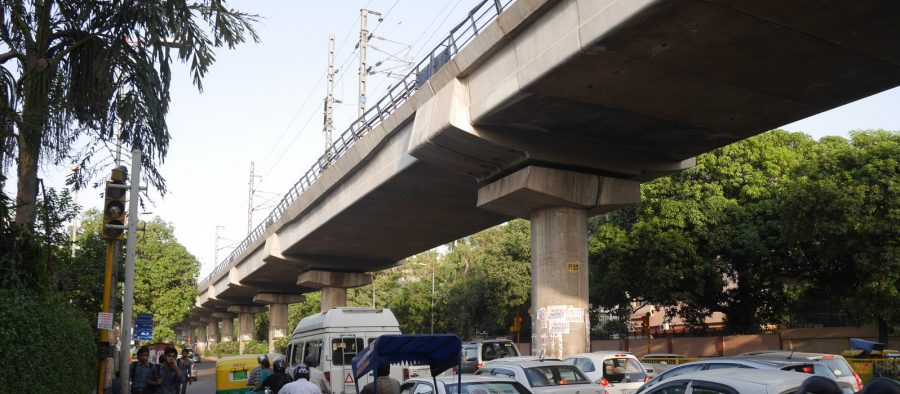When I first went to India in 2009, I was surprised to see that seemingly everybody had a mobile phone. I still thought of mobile phones as a luxury, because that is how the technology began its life in the United States. But by 2009, even in the rural Garo Hills, cowherds and fishermen had mobiles, even though these people led lives that were figuratively and literally a world apart from the affluent American college students I had been used to seeing with cell phones. Surely if Garo villagers could afford mobiles, then this technology was no longer a luxury.
The course of technological change has been quite different in India and the United States. The adoption of telephones illustrates the difference. In the USA, the first telephones came into use in the late nineteenth century, and they worked by sending voice encoded as electric signals through lines specially strung for that purpose. Telephones served a niche urban market at first, but as they became cheaper and the American population became more affluent, they expanded to suburban and rural markets as well. Telephone use became overwhelmingly common in the United States after World War II.
Mobile phones, also known as cell phones, were a much later addition to the American technological landscape, but they took root faster than the traditional wired phones or landlines. The earliest handheld mobiles reached the market in the 1980s, but they were bulky and impractical, as well as extremely expensive. They came in two parts: a handset and an additional transmitter and battery pack that the user carried in the other hand, like a combat telephone. My father reports that despite their impracticality, early mobile phones were a status symbol, and he would see executives proudly carrying them on the streets of San Francisco.
Both the size and the cost of mobile phones decreased dramatically during the 1990s. By the middle of the decade, they were cheap enough to be within reach of the American middle class mass, although they did not really start to catch on until the end of the decade. Around the middle of the next decade, my demographic at the time, college students, had so thoroughly adopted mobile phones that now anybody who didn’t have one had to explain why not.
The course of technological adoption in India was quite different, because wired landlines never became as popular here as they did in the United States. Telephone networks existed in India during colonial times, but they were limited to large cities and were too expensive for the majority of the population. After Independence in 1947, cities were linked through Standard Trunk Dialing (STD) networks, but the vast majority of the Indian population still lived in villages and had no access to this service. Even for urbanites, installing a telephone line was a lengthy process with manifold bureaucratic hurdles. In Anurag Mathur’s novel The Inscrutable Americans, the main character Gopal tells his American friend Randy that the installation of a telephone line in a home is a cause for celebration, second in importance only to the birth of a son. This is of course artistic license, but it illustrates how difficult it was to obtain a telephone connection in pre-liberalization India.
This began to change with the advent of mobile phone networks in the 1990s. The widespread adoption of mobile phones in India lagged the United States by about five years. In 2000, mobile phones were still a luxury in India. Each call cost Rs. 10, and handsets were out of the reach of all but the wealthy. This changed when the private industrial conglomerate Reliance Industries forced competing carriers to lower their rates by slashing handset costs and call prices by 90 percent. (A friend of mine in Delhi tells me that he got his first mobile phone in 2003 as a free promotional with 5 kg of oil.) By 2009, mobile networks had spread all across the country, and now served rural areas where it would have been too expensive to run landlines. For most of the Indian population (India’s population is still 70 percent rural), mobile phones leapfrogged landlines. Communities that had no access to any form of two-way direct communication now had telephones that they could carry with them wherever they went.
Mobile phones facilitated cultural change in both the United States and India, but the change was much more dramatic in India. Ten years ago, when cell phones were still novel enough in my demographic to be worth discussing, I heard this line on a regular basis: “I just don’t know how we survived before cell phones!” But this was a silly thing to say. Of course the way we survived was by planning ahead and using landlines. For the mass of the Indian population, the adoption of mobile phones really was revolutionary, because it allowed instantaneous voice communication over a distance, as well as the mobility that my demographic found so indispensable. But for us in the West, mobile phones were evolutionary, not revolutionary, because they permitted an extension of capabilities that we already had. For those Indians who had never had landlines, mobile phones really were revolutionary.
By 2009, mobile phones had gotten cheap enough to be accessible even to most of the poorer classes of Indians. Mobile phones facilitated business transactions and community organization, more quickly and cheaply than any means available prior to the phones’ arrival. Since they are now so widely accessible, mobiles have become an egalitarian technology, as they give a large portion of the population access to useful services previously accessible only to the elite.

